Today's Tidbit... Let's Cover Football's Rule Books
Sporting goods companies and others published a variety of sports publications. Wright & Ditson produced an annual football review that included the year's rules until Spalding took over that process with Walter Camp as editor. Spalding also published sports publications emphasizing techniques and coaching points, as did Wilson, Spinks, and others. My previous Tidbit concerning The Fundamentals of Kicking was based on a chapter from a 1923 Wilson publication.
Those publications were generally published as paperbacks, so it is common today to find them for sale with missing, loose, or heavily damaged covers. Who knows how the volumes became damaged, but it is fair to assume that many suffered injury through use, especially when coaches had them on the sideline to challenge the rulings of untrained referees and other officials. Journalists and others interested in the game also used the books.
Copies of the books published before 1920 can be challenging to locate, especially those in excellent condition. My library from this era relies mainly on PDF versions from the Library of Congress, reprints, and a handful of original print editions, most of which are in poor condition.
To limit the damage sustained by these publications, libraries and individuals commonly bound the paperback books and embossed the cover with the library, coaching staff, or individual owner's name. We'll cover three such books here, two of which are rare and owned by a collecting friend. Showing these books is an opportunity to describe their original owners, people with whom you are likely unfamiliar. I'll also show the only bound copy I own. While the volume is not rare, it is notable due to the original owner.
Here's an example Spalding Foot Ball Guide from 1892, which Spalding covered and presented to Frank D. Beattys, the manager of the 1884-1885 Wesleyan University football team, which then competed with Harvard, Yale, and Princeton. After graduating in 1885, Beattys remained active in Wesleyan football as a member of the Graduate Committee, overseeing athletic budgets and the like.
Another example comes from the same collector, and is a copy of the 1890 Spalding's Foot Ball Guide. Whereas Frank D. Beattys was involved in the game when his copy was published and bound, Ray Byrne II was a Pittsburgh funeral director and amateur football historian who became the Pittsburgh Steelers’ official statistician in 1948.
Byrne was a primary contributor to the 1945 issue of Spink's Football Record and Rule Book. Football record-keeping was still relatively new then—the first NCAA records were kept in 1938—and was handled by an outside agency, not the NCAA.

A newspaper article at the time of publication noted of Byrne:
About 17 years ago he began collecting football data of all descriptions, with a special eye to first editions of rule and record books.
As a result of his research, founding his library, and an eye for minutiate, Mr. Byrne can be safely classed as one of the real authorities on the history of the sport...
... (He is hailed) as owning more historical material than any one in the United States.
Boyle, Havey J., "Mirrors of Sport," Pittsburgh Post-Gazette, September 12, 1945.
Byrne presumably had his copy of the 1890 rules bound in the 1930s or 1940s.
The third example is a 1920 Spalding Football Guide owned by an 1889 All-American, so he played in the same era as the previous books. Amos Alonzo Stagg later became a professor and coach at the University of Chicago and one of the top figures in football history.
Since football rule books began, they have included a section discussing the year's rule changes. A fun element of Stagg's 1920 volume is his notations indicating the rules approved and discussed following their first year of use. The comment in the upper left corner of the first page below shows he made the notes during the 1921 Rules Committee meeting, by which time Stagg was a long-time committee member.
So, we've reviewed bound rule books connected to 1890-era football from three individuals with different ties to the game: a team manager, a statistician, and a player/coach.
And that about covers the topic.
Click here for options on how to support this site beyond a free subscription.


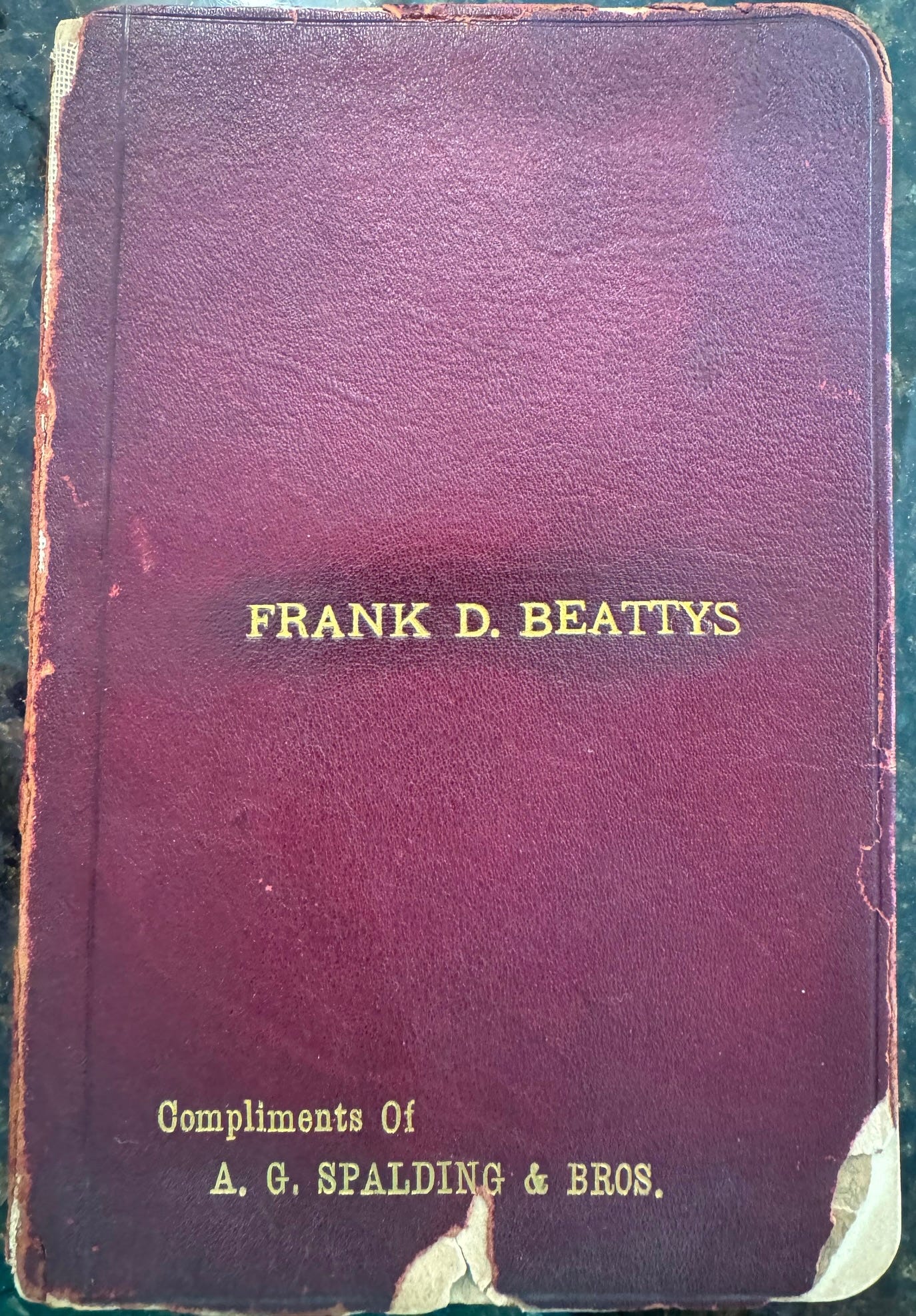
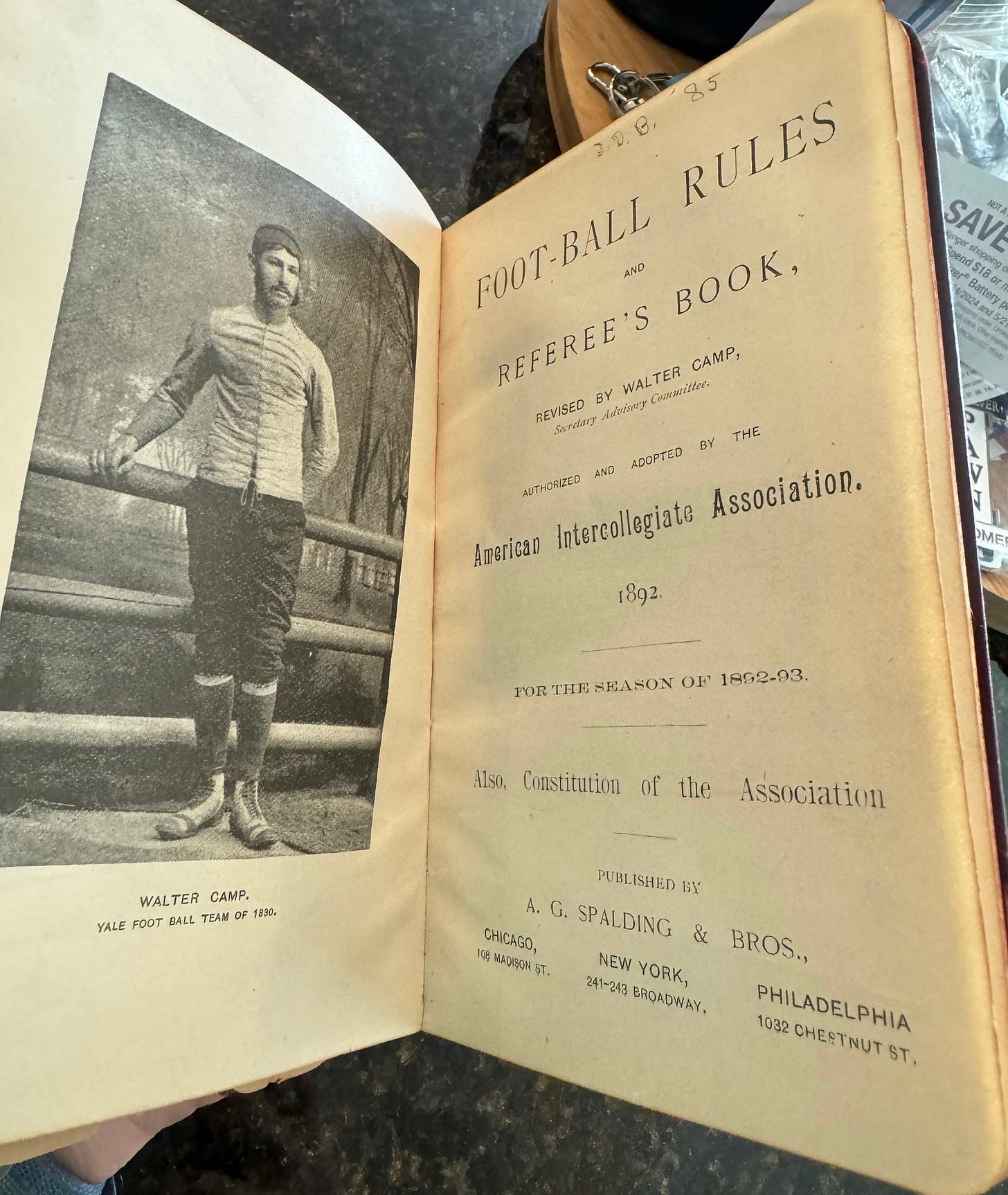
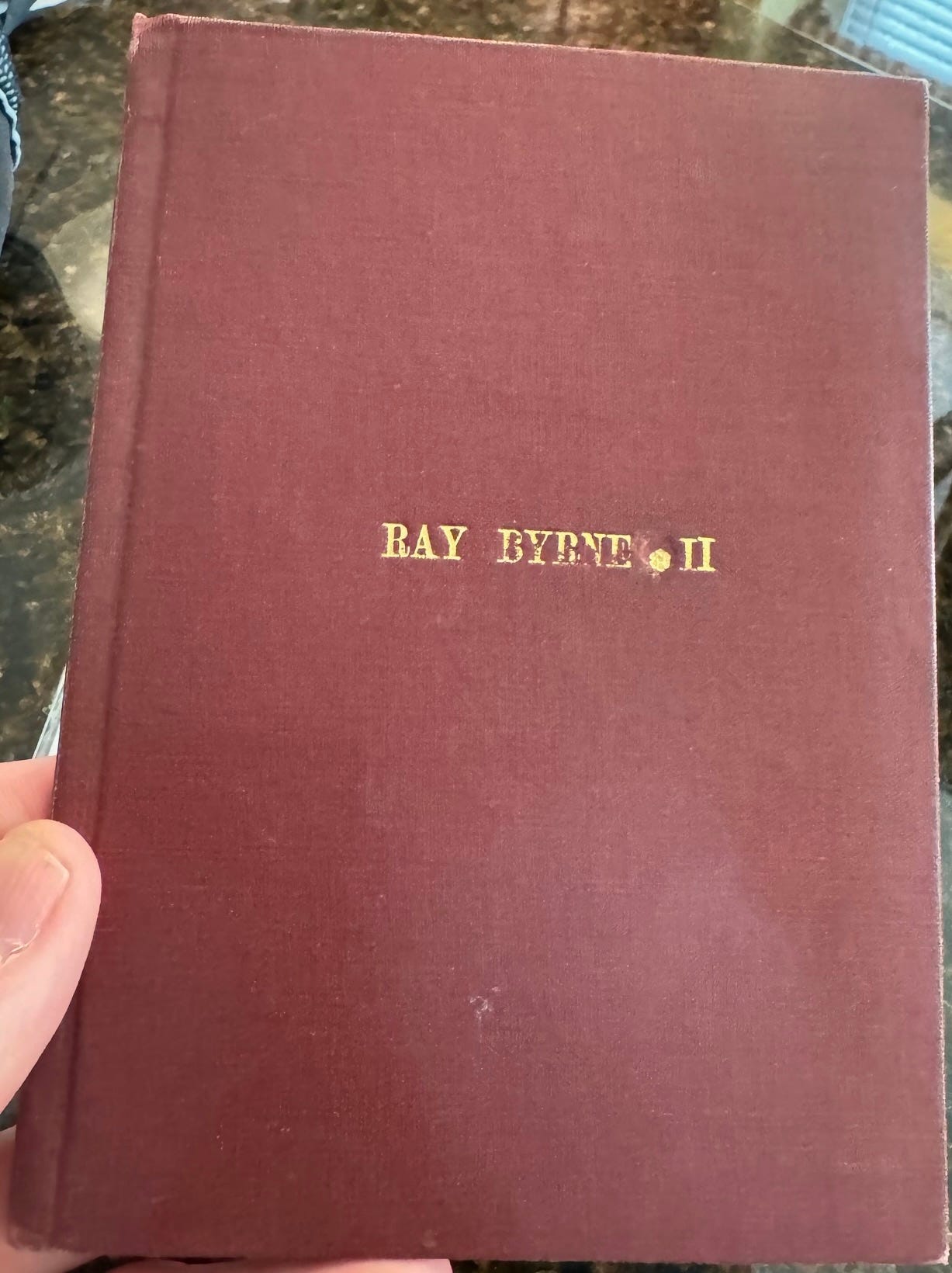

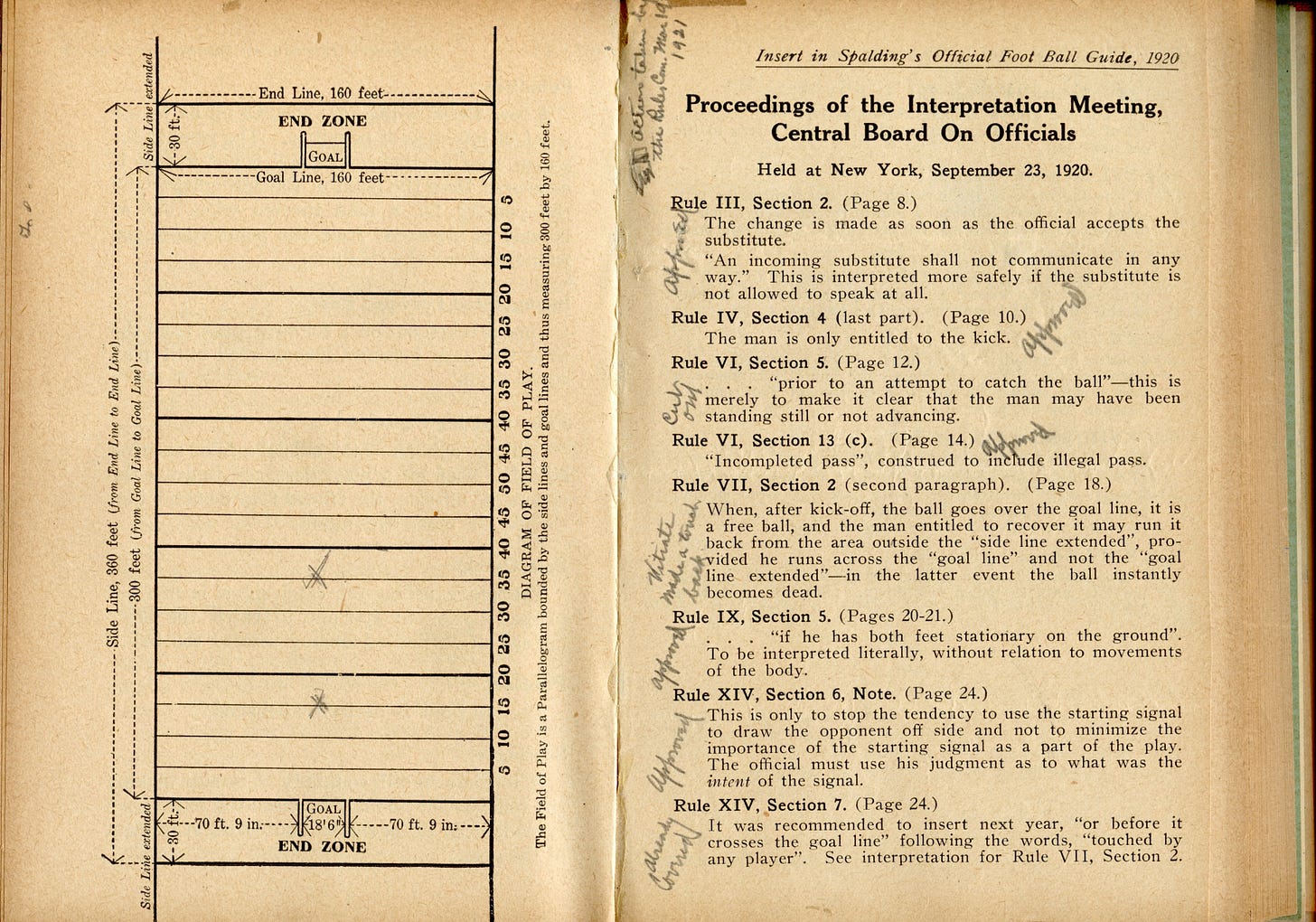
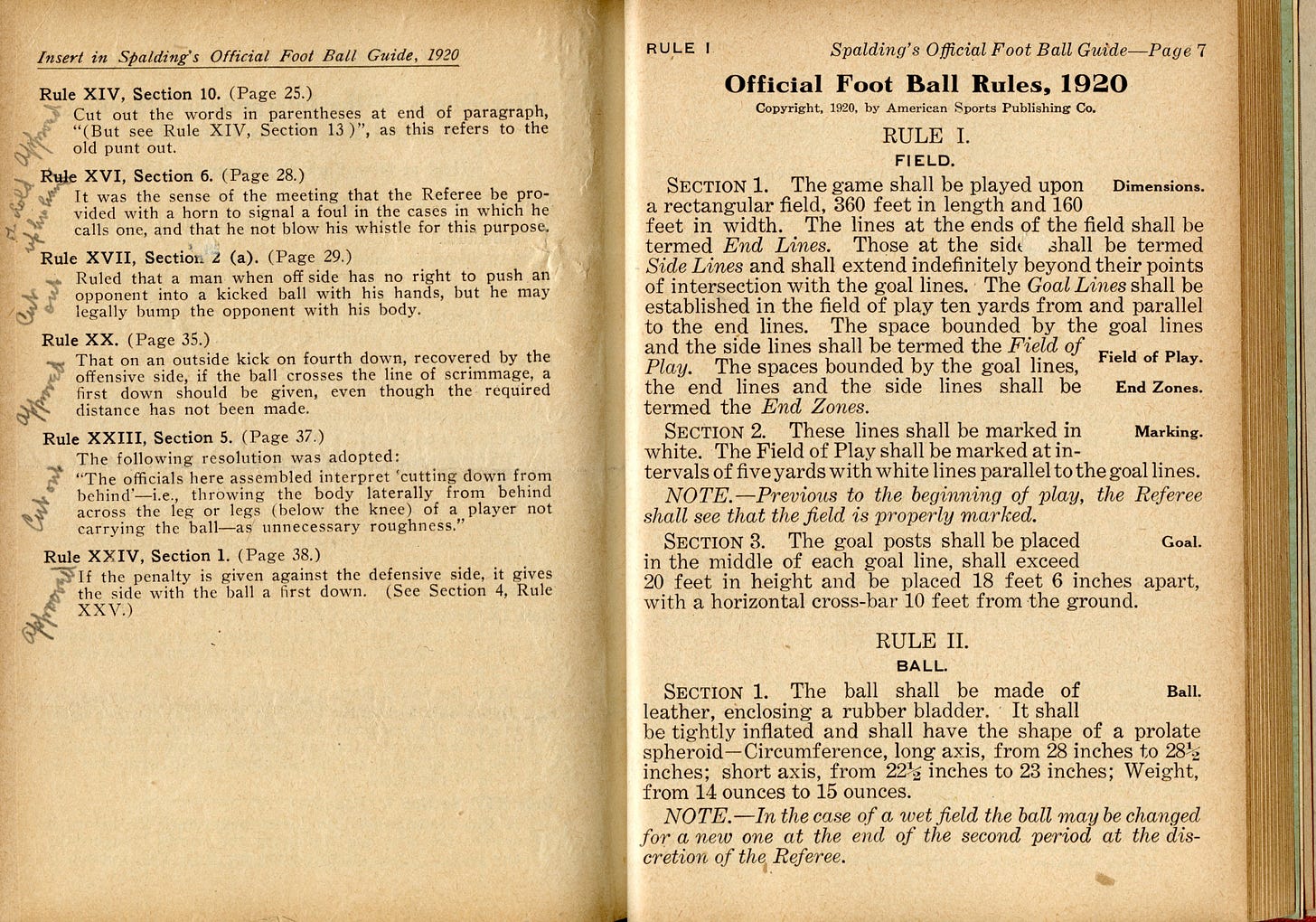
I've recently located a lot more rule books at archive.org. Slowly adding the pdf's to digital collection. Could've used them when compiling my field markings. If you've come across a ball diagram with measurements like in '38-'68, e.g. pre 1934, please let me know.